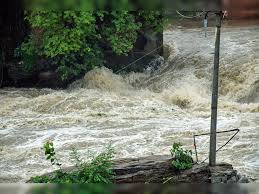Flood Situation Near Subarnarekha River: Latest Updates

Introduction
The ongoing flood situation near the Subarnarekha River has raised significant concerns for the local population and agricultural activities in the region. As heavy rainfall continues to impact various parts of India, the Subarnarekha River has witnessed a noticeable increase in water levels, prompting government agencies and relief organizations to assess the situation closely.
Current Situation
As of this week, water levels in the Subarnarekha River have crossed the danger mark, affecting nearby villages, particularly in Jharkhand and West Bengal. Local authorities have reported that around 15 villages are currently submerged, leading to the displacement of approximately 5,000 residents. Relief camps have been set up in strategic locations, providing essential supplies such as food, clean water, and medical assistance.
Impact on Agriculture
Flooding has significantly impacted agricultural activities, with paddy and vegetable crops being affected. Farmers in the area have expressed concerns about losing their livelihoods due to this unanticipated natural disaster. The state government is expected to announce financial assistance packages to support those whose crops have been damaged by floodwaters.
Government Response
The state disaster management authorities have issued advisories urging residents to remain vigilant as the weather forecast predicts further rainfall in the coming days. Rescue operations are underway, with boats deployed to reach isolated communities. The National Disaster Response Force (NDRF) has been called in to assist with evacuation efforts and provide necessary support to the stranded individuals.
Conclusion
As the flood situation near the Subarnarekha River continues to evolve, officials are working tirelessly to manage the crisis and mitigate its impact on the local population. While immediate relief efforts are ongoing, the long-term recovery process will require a coordinated response between government agencies, NGOs, and the local community. The situation remains critical, and it is essential for residents to stay informed through official channels as they navigate this challenging period.









